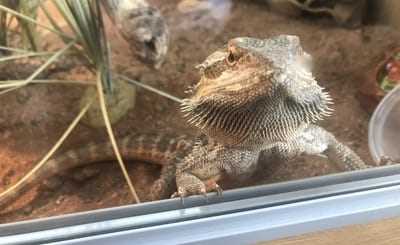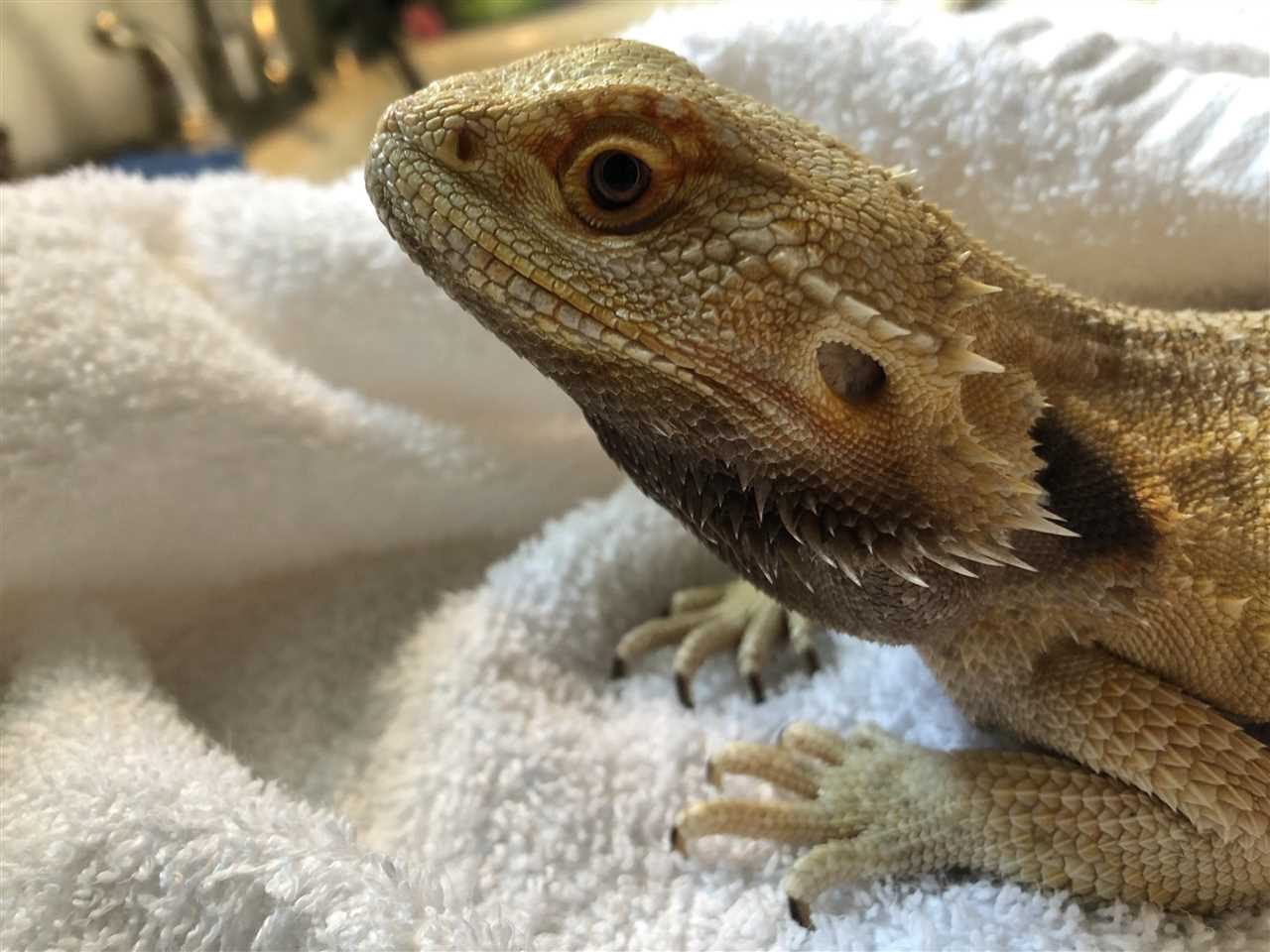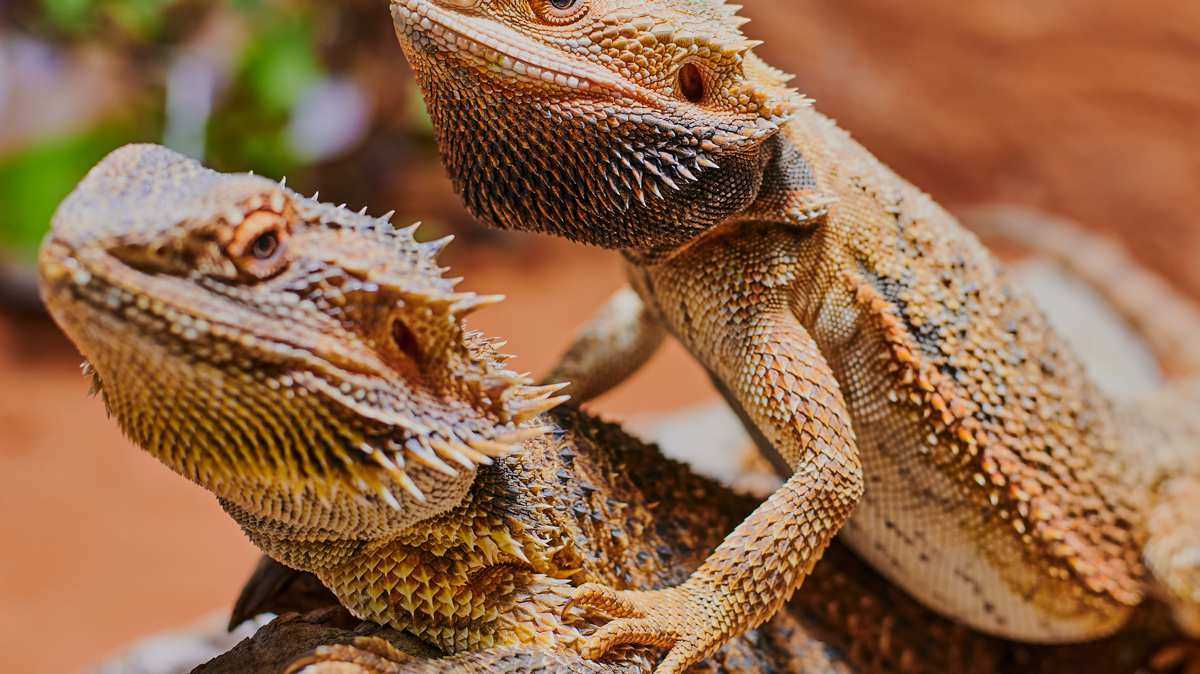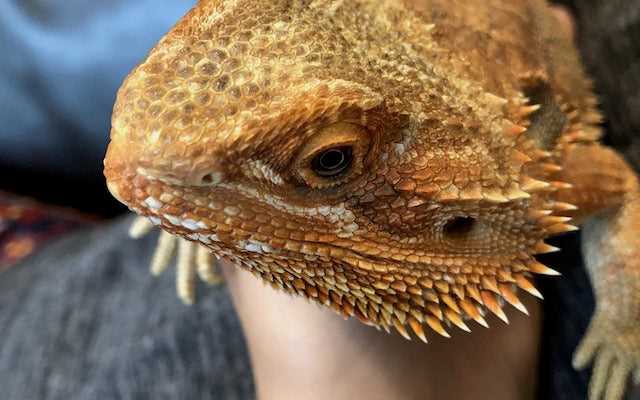
Bearded dragons are fascinating creatures that have captured the hearts of reptile enthusiasts worldwide. Beyond their scaly exteriors and impressive beards, these reptiles are believed to possess a range of complex feelings and emotions. While some may argue that reptiles are incapable of experiencing emotions, there is a growing body of evidence suggesting that bearded dragons might be more emotionally complex than previously thought.
Research has shown that dragons not only have the ability to experience basic emotions such as fear and aggression, but they may also exhibit more advanced emotions such as happiness and contentment. When provided with a suitable environment, proper care, and regular social interactions, bearded dragons have been observed to display behaviors that indicate a sense of satisfaction and well-being.
One interesting aspect of bearded dragon emotions is their ability to form bonds with their human caretakers. These reptiles have been known to recognize and respond to familiar faces, showing signs of trust and affection. Some dragons even seek out physical contact, enjoying gentle petting and interaction with their human companions. This suggests that bearded dragons are capable of forming deep emotional connections with those who care for them.
The Basics of Bearded Dragons
Feelings and Emotions
Basic Care
Providing the appropriate care for a bearded dragon is crucial for its well-being and happiness. This includes creating a suitable habitat, providing a proper diet, and maintaining proper hygiene. Bearded dragons need a spacious enclosure with access to both heat and UVB lighting, as well as a variety of hiding spots and climbing opportunities.
The diet of a bearded dragon should consist mainly of insects and leafy greens. Owners should ensure that they are providing a balanced and varied diet to meet their nutritional needs. Additionally, bearded dragons require regular bathing to maintain their skin and prevent dehydration.
Handling and Interaction
Owners should also provide mental stimulation for their bearded dragons by offering toys, puzzles, and opportunities for exploration. This can help prevent boredom and promote their overall well-being.
Bearded Dragons: Complex Creatures
What Do Bearded Dragons Feel?
While it’s not possible to determine exactly what bearded dragons feel, many experts believe they are capable of experiencing a range of emotions, including happiness, fear, stress, and contentment.
Some signs that a bearded dragon may be experiencing positive emotions include:
- A relaxed body posture
- Active and curious behavior
- A healthy appetite
- Engagement in their environment
On the other hand, signs of negative emotions or stress in bearded dragons can include:
- Aggressive or defensive behavior
- Loss of appetite
- Restlessness or pacing
- Changes in color, such as darkening or lightening
Recognizing Stress and Anxiety in Bearded Dragons

Just like humans, bearded dragons have feelings too. While they may not express their emotions in the same way we do, they do have their own unique ways of showing how they feel. For example, when a bearded dragon is stressed or anxious, they may exhibit certain behaviors such as hiding, puffing up their beard, or even trying to escape from their enclosure.
Signs of Stress and Anxiety
There are several signs that can indicate that your bearded dragon is feeling stressed or anxious. These include:
- Loss of appetite
- Restlessness
- Aggression or sudden mood changes
- Frequent digging or scratching at the enclosure
- Excessive basking or hiding
- Changes in color or posture
Causes of Stress and Anxiety
There are several factors that can contribute to stress and anxiety in bearded dragons. These may include:
- Inadequate enclosure size
- Poor lighting or heating
- Improper diet or nutrition
- Lack of socialization or interaction
- Excessive handling or disruption of their daily routine
Reducing Stress and Anxiety
As an owner, there are several steps you can take to help reduce stress and anxiety in your bearded dragon:
- Ensure that the enclosure is the appropriate size and provides the necessary lighting, heating, and humidity levels.
- Establish a consistent feeding schedule and provide a balanced diet that meets their nutritional needs.
- Create a quiet and calm environment for your dragon, away from loud noises and disturbances.
- Handle your dragon gently and avoid excessive handling if they show signs of stress or discomfort.
- Offer them plenty of hiding spots and provide mental stimulation through toys or environmental enrichment.
- Monitor their behavior closely and seek veterinary care if you notice any persistent signs of stress or illness.
Creating a Comfortable Environment for Bearded Dragons
Bearded dragons, like any other living creature, have feelings and emotional needs. As a responsible owner, it is essential to create a comfortable environment for your pet to thrive and experience a positive emotional state.
The first step in creating a comfortable environment is to provide a suitable habitat for your bearded dragon. This includes ensuring that the enclosure is of the right size, has adequate lighting and heating, and offers a variety of hiding spots and climbing structures. The enclosure should mimic the natural habitat of bearded dragons, providing them with a sense of security.
Another crucial aspect of creating a comfortable environment is providing proper substrate for your bearded dragon. The substrate should be safe, easy to clean, and offer a comfortable surface for the dragon to walk and rest on. Avoid using substrates that can cause impaction, such as loose sand or gravel.
In addition to physical comfort, bearded dragons also require mental stimulation to keep them happy and engaged. Provide a variety of toys and objects for your dragon to interact with, such as branches, tunnels, and small balls. This will help prevent boredom and stimulate their natural instincts.
By creating a comfortable environment for your bearded dragon, you are not only promoting their physical well-being but also their emotional health. A happy and content bearded dragon will display positive behaviors and will be more likely to thrive in captivity.
Building Trust and Bonding with Bearded Dragons
Bearded dragons, like any other living creatures, have emotions and feelings. Despite their reptilian nature, these unique creatures are capable of forming strong bonds with their owners. By establishing trust and bonding with your bearded dragon, you can create a positive and enriching environment for them to thrive in.
One of the first steps in building trust with your bearded dragon is to create a calm and peaceful environment for them. Bearded dragons are sensitive to changes in their surroundings and can easily become stressed or anxious. By providing a stable and consistent routine, you can help them feel safe and secure.
Another crucial aspect of building trust is to establish regular handling sessions. Start by gently petting your bearded dragon and gradually increase the amount of time you spend handling them. This will help them become familiar with your touch and presence. Always be gentle and avoid any sudden movements or loud noises that can startle them.
Feeding time can also be an opportunity to build trust and bonding. You can hand-feed your bearded dragon their favorite treats, such as small pieces of fruit or live insects. This not only creates positive associations with you but also encourages them to approach you willingly.
When interacting with your bearded dragon, make sure to respect their personal space and boundaries. Avoid forcing them to do anything they may feel uncomfortable with, as this can damage the trust you have worked so hard to build. Give them the freedom to explore their environment at their own pace.
| Building Trust and Bonding with Bearded Dragons: |
|---|
| 1. Create a calm and peaceful environment |
| 2. Establish regular handling sessions |
| 3. Hand-feed their favorite treats |
| 4. Respect their personal space and boundaries |
Building trust and bonding with your bearded dragon takes time and effort, but the rewards are worth it. By establishing a strong connection with your pet, you can provide them with a fulfilling and enriched life, ensuring their emotional well-being.
The Importance of Feeding and Nutrition for Bearded Dragons
Feeding and nutrition are essential factors in ensuring the health and well-being of bearded dragons. Proper nutrition plays a crucial role in maintaining their overall physical and emotional well-being.
1. The Role of Diet in Bearded Dragon’s Health
A well-balanced diet is crucial for bearded dragons as it provides them with the essential nutrients, vitamins, and minerals they need to thrive. Their diet should consist of a variety of insects, vegetables, and fruits.
Some commonly recommended insects include crickets, mealworms, and waxworms. These insects provide a good source of protein and should be dusted with calcium and vitamin D3 supplements before being fed to the dragons. Feeder insects should be gut-loaded, meaning they are fed with nutrient-rich foods before being given to the bearded dragons.
2. Feeding Frequency
The feeding frequency for bearded dragons varies depending on their age. Juvenile dragons require more frequent feedings compared to adult dragons. Juveniles should be fed 2-3 times a day, while adults can be fed once every 1-2 days.
3. Providing Fresh Water
Conclusion
Proper nutrition and feeding practices are vital for the overall health and well-being of bearded dragons. By providing a balanced diet consisting of a variety of insects, vegetables, and fruits, and ensuring they have constant access to fresh water, you are helping to promote their physical and emotional well-being.
Providing Mental Stimulation for Bearded Dragons

Bearded dragons are fascinating reptiles to have as pets. Not only do they have unique physical characteristics, but they also exhibit complex behaviors that can be quite intriguing. One important aspect of caring for bearded dragons is providing them with mental stimulation.
Why is mental stimulation important for bearded dragons?
Similar to humans and other animals, bearded dragons can easily become bored if they do not have enough mental stimulation. Providing mental stimulation is essential for their overall well-being and can help prevent behavioral problems such as aggression or a decrease in appetite.
How to provide mental stimulation for your bearded dragons?
There are several ways you can provide mental stimulation for your bearded dragons:
1. Environmental enrichment: Create a habitat that mimics their natural environment. Include rocks, branches, and other objects for them to climb on and explore. Changing the arrangement of their habitat every once in a while can also provide novelty and prevent boredom.
2. Introduce new objects: Bearded dragons are naturally curious creatures. Introduce new objects, toys, or puzzles into their habitat for them to investigate and interact with. Avoid using objects that are small enough to be swallowed or that could potentially harm them.
3. Offer varied diet: Providing a varied diet can not only keep your bearded dragons physically healthy but also mentally stimulated. Offer a mix of different insects, vegetables, and fruits to keep their diet interesting and provide them with a wider range of flavors and textures.
4. Social interaction: Bearded dragons are not typically social creatures, but they can still benefit from some social interaction with their owners. Spend time handling them gently and providing them with positive reinforcement. This can help build trust and form a stronger bond with your bearded dragons.
5. Create a foraging experience: Bearded dragons enjoy the thrill of hunting for their food. Hide their food in different spots within their habitat, encouraging them to search for it. This can mimic their natural hunting behaviors and provide mental stimulation.
6. Rotate and introduce new scents: Bearded dragons have a well-developed sense of smell. Introduce new scents into their environment, such as herbs or essential oils, to provide stimulation and keep things interesting for them.
Conclusion
Providing mental stimulation for your bearded dragons is crucial for their overall well-being. By offering a stimulating environment, introducing new objects, providing varied diet, offering social interaction, creating a foraging experience, and rotating scents, you can keep your bearded dragons mentally engaged and happy.
Dealing with Aggression
One effective strategy to deal with aggression in bearded dragons is desensitization. This involves slowly exposing the dragon to the stimuli that trigger aggression in a controlled and gradual manner. For example, if your bearded dragon becomes aggressive when you approach its enclosure, try sitting near the enclosure and gradually moving closer over time.
Additionally, providing your bearded dragon with adequate hiding spots and a retreat area can help reduce aggressive behaviors. A safe and secure environment allows the reptile to feel safe and may decrease feelings of territoriality.
Proper handling techniques are also essential when dealing with aggression. Always support the bearded dragon’s body while gently restraining its movements. Avoid grabbing it by the tail or limbs, as this can cause stress and exacerbate aggression.
In some cases, seeking the assistance of a reptile behavior expert or veterinarian experienced with bearded dragons may be necessary to address aggression. They can provide guidance specific to your dragon’s needs and help implement effective strategies to manage and reduce aggression.
Socializing with Other Pets
1. Introducing New Pets

Once your pets have become acquainted with each other’s scent, you can start introducing them in a controlled setting. Keep a close eye on their interactions and be prepared to intervene if necessary. It is essential to monitor your Bearded Dragon’s body language and reactions to ensure they feel safe and comfortable throughout the process.
2. Ensuring Safety
When allowing your Bearded Dragon to socialize with other pets, it is crucial to prioritize their safety. Be aware of the size and temperament of the other animals involved, especially if they are significantly larger or more aggressive than your Bearded Dragon.
If you have a smaller pet, such as a bird or rodent, always supervise their interactions with your Bearded Dragon closely. As prey animals, these small pets may trigger a predatory response in your Bearded Dragon, putting them at risk.
3. Monitoring Reactions
Pay close attention to your Bearded Dragon’s reactions during interactions with other pets. Signs of distress or discomfort include puffing up their beard, hissing, tail whipping, or attempting to escape. If you observe these behaviors, it may indicate that your Bearded Dragon is feeling stressed or anxious.
In such cases, it is essential to separate the pets and reassess their compatibility. Not all Bearded Dragons may be suited for socializing with other pets, and it is crucial to prioritize their emotional well-being.
Remember, each Bearded Dragon is unique, and their feelings towards other pets may vary. Take the time to understand your individual Bearded Dragon’s needs and preferences. With patience, proper introductions, and careful monitoring, you can create a harmonious and enriching environment for your Bearded Dragon and their furry or feathered friends.
Socializing with Other Pets
Start by allowing your bearded dragon and other pets to sniff and observe each other from a safe distance. This will help them become familiar with each other’s scent and presence. Gradually decrease the distance between them, always keeping a close eye on their reactions. If either pet shows signs of stress or aggression, immediately separate them and try again at a later time.
As your bearded dragon and other pets become more comfortable with each other, you can start allowing supervised interactions. This can include allowing your bearded dragon to explore the same room as your other pets or even letting them interact with each other directly (always with supervision).
If you notice any signs of stress or aggression during interactions with other pets, it is best to separate them and consult with a veterinarian or an animal behaviorist for guidance. They can provide you with specific tips and advice based on the personalities and needs of your pets.
Overall, socializing your bearded dragon with other pets can be a positive and rewarding experience for both them and your other animals. It can help reduce feelings of loneliness and provide mental stimulation for your bearded dragon. Just remember to always prioritize the safety and well-being of all your pets during the socialization process.
Common Signs of Illness in Bearded Dragons

1. Lack of Appetite
A sudden decrease in appetite is often an indication that something is wrong with your bearded dragon. If they are not eating their regular diet or refusing to eat altogether, it could be a sign of an underlying health issue.
2. Weight Loss
3. Changes in Bowel Movements
Any significant changes in the frequency or consistency of your bearded dragon’s bowel movements can be an indication of digestive issues or intestinal parasites. Pay attention to the color, texture, and odor of their feces.
4. Abnormal Shedding
Bearded dragons regularly shed their skin, but if you notice any difficulties or abnormalities during the shedding process, it may be a sign of an underlying problem. Stuck shed or incomplete shedding can lead to skin infections.
5. Respiratory Problems
Bearded dragons can suffer from respiratory infections, which can cause symptoms such as wheezing, labored breathing, or excessive mucus around the mouth and nose. These issues should be addressed promptly.
6. Changes in Behavior
If your bearded dragon’s behavior suddenly changes and they become lethargic, aggressive, or unusually inactive, it could be a sign of illness. Be observant and notice any abnormalities in their usual behavior patterns.
7. Open Mouth Breathing
If you notice your bearded dragon constantly breathing through their mouth with their mouth open, it may indicate a respiratory infection or other respiratory distress. This can be a serious condition and requires immediate veterinary attention.
8. Swollen Eyes or Mouth
Remember, early detection of any illness is crucial for the health and well-being of your bearded dragon. Regular veterinary check-ups and attentive observation can help ensure a long and happy life for your scaly companion.

I’m Lena Adams—a product of an unconventional upbringing in the African wilderness. My father, a daring explorer of African wildlife, sparked my fascination with reptiles, a passion that intertwined with the tragic loss of my mother during an expedition, leaving an indelible mark on my life. Driven to understand the creatures that captivated my parents, I embarked on my journey, sharing insights about reptiles, frogs, and lizards on my website. Through my explorations and conservation efforts, I honour my family’s legacy while seeking connections—to the creatures, nature, and the mother whose presence I yearn to understand.
